"System" A "- the firstborn of the national missile defense
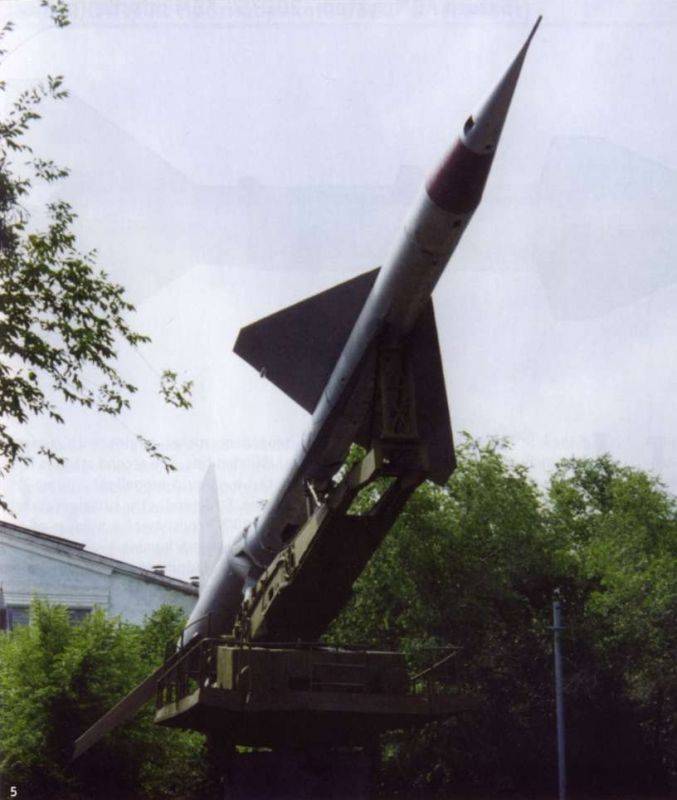
Anti-missile B-1000 on the launcher, the city of Priozersk (Sary-Shagan test site). Photos from the site http://army.lv
With the "section" of the rocket heritage of Nazi Germany, its main part, including most of the ready-made Fau missiles of both types and a substantial part of the designers and developers, went to the United States. But the leadership in the creation of a ballistic missile capable of carrying a nuclear charge to another continent remained, nevertheless, behind the Soviet Union. This is precisely what the famous launch of the first artificial Earth satellite 4 of October 1957 of the year testified to. However, for the Soviet military such events were events that happened more than a year earlier: 2 February 1956 from the Kapustin Yar test site in the direction of the Karakums they launched the R-5M nuclear warhead - for the first time in the world.
But successes in creating ballistic missiles were accompanied by growing fears of the Soviet leadership that, in the case of real hostilities, the country would have nothing to defend against the same weapons the adversary. And therefore, almost simultaneously with the development of the attack system in 1953, the creation of a defense system - antimissile defense began. Eight years later, it ended with the successful launch of the world's first B-1000 anti-missile missile, which not only found its target in the sky - the P-12 ballistic missile, but also successfully hit it.
It is noteworthy that a year later, in July, 1962 in the USA, with fanfare, reported on the creation of an American missile defense system and the successful defeat of a ballistic missile. True, the details of this success today look somewhat depressing against the background of the achievement of the Soviet B-1000. An experienced Nike-Zeus anti-missile system discovered a ballistic missile, gave the command to launch an anti-missile, and she, not armed with anything (since this stage of the tests was still ahead) passed two kilometers from the target. However, the US military found this to be a completely satisfactory result. What you probably wouldn't have done if they knew that a year and a half before, the B-1000 combat unit had worked in the 31,8 and more to the left and 2,2 and above the target — the P-12 warheads. The interception took place at an altitude of 25 km and at a distance of 150 km. But the Soviet Union preferred not to extend such successes for understandable reasons.
A letter to seven marshals
Starting point in stories national missile defense should be considered the famous "letter of the seven marshals", sent to the Central Committee of the KSPP in August 1953. Its text, as Grigory Kisunko, the chief designer of the first Soviet missile defense system, recalled much later, was: “In the near future, a potential enemy of long-range ballistic missiles is expected to emerge as the main means of delivering nuclear weapons to strategically important facilities in our country. But the air defense weapons that we have in service and re-developed cannot fight ballistic missiles. We ask you to instruct the industrial ministries to begin work on the creation of a missile defense system (means of combating ballistic missiles). ” Below were the signatures of the Chief of the General Staff of the USSR Armed Forces and First Deputy Minister of Defense Vasily Sokolovsky, First Deputy Minister of Defense Alexander Vasilevsky, First Deputy Minister of Defense Georgy Zhukov, Chairman of the Military Council of the Defense Ministry and Commander of the Carpathian Military District Ivan Konev, Commander of the Air Defense Forces Konstantin Vershinin and his First Deputy Nikolai Yakovlev as well as the commander of artillery Mitrofan Nedelin.
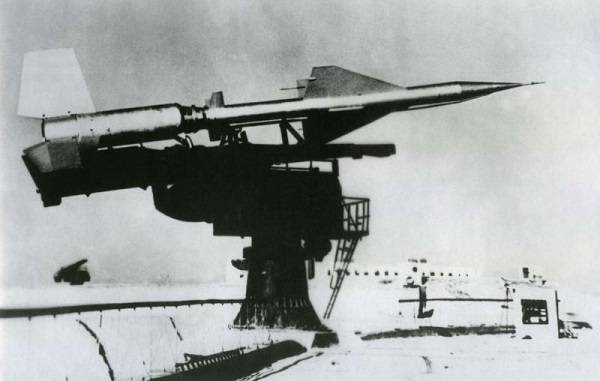
B-1000 before start, 1958 year. Photos from the site http://army.lv
It was impossible to ignore this letter: most of its authors had just returned from Stalin’s disgrace and were the main pillar of the new leader of the USSR, Nikita Khrushchev, and therefore were among the most influential military leaders of that time. Therefore, as Grigory Kisunko, future chief engineer of KB-1 (the current Almaz Research and Production Association, the leading Russian enterprise in the field of anti-aircraft missile systems and air defense systems), Fyodor Lukin, recalled, said: “We must begin work on missile defense. As soon as possible. But so far no promise. What will be the result is difficult to say now. But there is no risk here: missile defense will not work - a good technical base will turn out for more advanced anti-aircraft systems. ” And as a result, the participants in the meeting of scientists and designers, at which the “letter of the seven marshals” was discussed, attached the following resolution to it: “The problem is complex, we have been given the task to start studying it”.
Apparently, at the top such an answer was considered to be the beginning of the work, because already October 28 1953 of the USSR Council of Ministers issues an order "On the possibility of creating missile defense systems", and December 2 - "On developing methods for dealing with long-range missiles." And from this moment almost in all design bureaus, institutes and other organizations, at least somehow connected with the issues of air defense, radar, rocket production and guidance systems, the search begins for ways to build a national missile defense system.
I believe - I do not believe
But the decrees and orders could not affect one very important fact: most of the leading Soviet missile and air defense specialists were more than skeptical about the idea of anti-missile weapons. It is enough to cite only some of the most characteristic statements in which they clothed their attitude. Academician Alexander Raspletin (creator of the first C-25 air defense missile system): “Just some kind of nonsense!” Corresponding Member of the USSR Academy of Sciences Alexander Mintz (an active participant in the development and construction of the C-25 system): "This is as stupid as firing a projectile at a projectile." Academician Sergei Korolyov: “The missile attackers have many potential technical capabilities to circumvent the missile defense system, and I simply do not see the technical capabilities to create an irresistible missile defense system either now or in the foreseeable future.”
Nonetheless, since instructions from above unequivocally demanded the development and creation of a missile defense system, the military-industrial complex undertook it - but it was not entrusted to the first persons. And thus opened the way to glory for the future creators of the country's missile defense. One of them was Grigory Kisunko, at that time - the head of the 31 division of KB-1. It was he who was commissioned to take on missile defense research work, which no one particularly wanted to do.
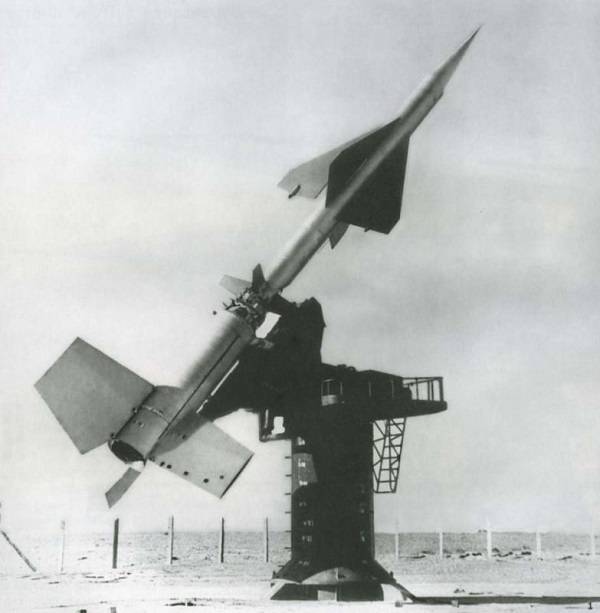
Anti-missile B-1000 on the launcher at the Sary-Shagan test site, 1958 year. Photo from http://army.lv
But Kisunko was fascinated by this task so much that it became a matter of his life. The first calculations showed that with the existing radar systems at that time, one would have to use 8-10 antimissiles to destroy one ballistic missile. This was a clear waste, on the one hand, and on the other, even such a massive "bombardment" did not guarantee the result, since the anti-missile defenders could not be sure of the accuracy of determining the coordinates of the target. And Grigory Kisunko had to actually start all work from scratch, creating a new system of “trapping” attacking missiles - the so-called three-range method, which involved using three precision-guidance radars to determine the coordinates of a ballistic missile with an accuracy of five meters.
The principle of determining the coordinates of the attacking missile became clear - but now it was necessary to understand by what parameters of the reflection of the radio beam it is possible to detect the ballistic missile, and not, say, an airplane. To deal with the reflective features of the missile warheads, we had to ask for support from Sergei Korolev. But then the developers of the missile defense faced, as they recall, with unexpected resistance: Korolev flatly refused to share his secrets with anyone! I had to jump over my head and ask for the support of the Minister of Defense Industry Dmitry Ustinov (the future head of the USSR Ministry of Defense), and only after his orders did the anti-missile missiles hit the Kapustin Yar proving ground. Came to suddenly find out: the developers of ballistic missiles themselves do not know anything about their reflective properties. I had to start again from scratch ...
The finest hour Grigory Kisunko
Feeling that the work on the creation of a missile defense system is stalling, the patrons of this theme from the composition of the Council of Ministers lobbied the next resolution. 7 July 1955, Minister of Defense Industry Dmitry Ustinov signed the order “On the establishment of SKB-30 and conducting research in the field of missile defense”. This document was of particular importance in the history of national missile defense, since it was he who made the head of the new SKB, the head of the 31 division of KB-1, and thus gave him freedom of action. After all, his former boss Alexander Raspletin, while continuing to engage in air defense missile systems, continued to consider missile defense as an untenable fiction.
And then an event occurred that determined all further course of the story. In the summer of the same 1955, Dmitry Ustinov decided to invite to the session on missile defense issues, where the main speaker was the head of SKB-30, Grigory Kisunko, another participant. They became the chief designer of the "missile" OKB-2, Peter Grushin, the creator of the B-300 rocket, the main combat force of the C-25, the first Russian anti-aircraft missile defense system. So two people met, the collaboration of which made possible the emergence of "System" A "- the first national missile defense system.
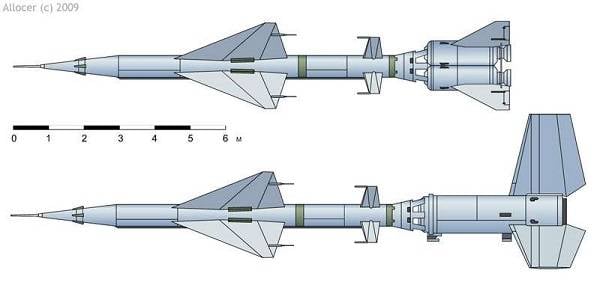
B-1000 in the throw test version (below) and in the standard version. Photos from the site http://army-news.ru
Grigory Kisunko and Pyotr Grushin immediately appreciated the capabilities and abilities of each other, and most importantly, they understood that their combined efforts turn purely theoretical studies into a basis for practical work. She began to boil with heightened intensity, and pretty soon the meeting initiator, Minister Ustinov, was able to lobby another decision in the government, which finally brought the anti-missile defense work out of the gray research zone to the white zone of creating an experimental missile defense system. 3 February 1956 The Council of Ministers of the USSR and the Central Committee of the CPSU adopted a joint resolution “On Missile Defense”, which KB-1 was charged with developing a draft experimental missile defense system, and the Ministry of Defense selected the location of the missile defense site. Grigory Kisunko was appointed Chief Designer of the system, Pyotr Grushin was appointed Chief Designer of the antimissile system. Sergey Lebedev was appointed chief designer of the central computing station, without which data coming from radars and antimissile control could not be reduced, Vladimir Sosulnikov and Alexander Mints were appointed chief designers of early warning radars, and Frol Lipsman was appointed chief designer of the data transmission system. This is how the core team, responsible for the emergence of the world's first missile defense system, was determined.
Missile radar
Further work on the creation of "System" A "- this is the code that the first Soviet missile defense system received - consisted of several stages, which initially proceeded independently of each other. First, it was necessary to thoroughly investigate the radar characteristics of ballistic missiles throughout the entire flight trajectory, and separately - their separating warheads in the final segment. For this purpose, an experimental radar station RE-1 was developed and built, the location of which was the new test site. 1 in March became known about where it will be located when the General Staff decided to organize a new test site in the Betpak-Dala desert near Lake Balkhash, near the Saryshagan railway station. Under this name - Sary-Shagan - a new testing ground and later became known both in our country and abroad. And then it still had to be built: the first builders arrived at the site only on July 13 1956 of the year.
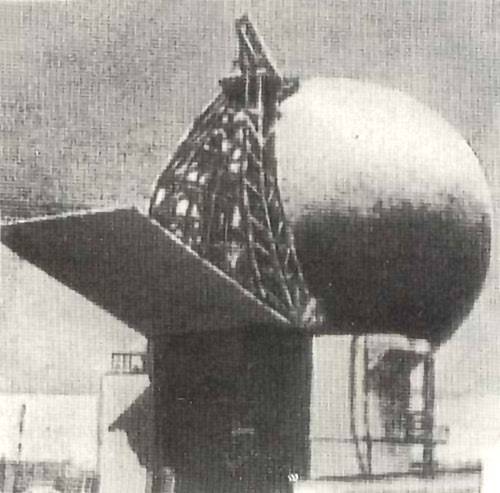
Radar station RE-1. Photos from http://militaryrussia.ru
While military builders were building the foundations for new radars and housing for those who would work for them, Grigori Kisunko and his colleagues were working hard to develop the RE-1, which was primarily to give an answer, how to detect missiles and their warheads. In March 1957, the installation of the station began, and 7 June was put into operation. And a year later, the second, more powerful radar station РЭ-2 entered into service, during the development of which the operating experience of the first was taken into account. The main task that these stations faced was the most important for the development of the A system: tracking the launches of the P-1, P-2, P-5 and P-12 missiles, they allowed them to systematize and classify their radar properties - so to speak, " to draw a portrait "of the attacking rocket and its warheads.
By that time, that is, by the autumn of 1958, the “Danube-2” radar station for radar detection had come into operation. It was she who was supposed to detect the launch and movement of enemy ballistic missiles and transmit information about them and their coordinates to precision-directed radars (PTH), which were responsible for targeting B-1000 to the target. The construction turned out to be gigantic: the transmitting and receiving antennas of the Danube-2 were separated from each other by a kilometer, with each being 150 meters long and 8 height (transmitting) and 15 meters (receiving) meters!
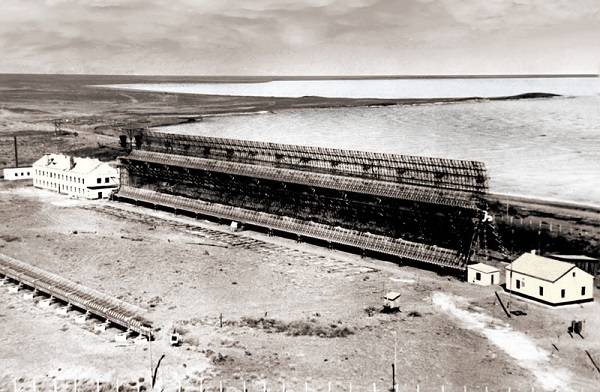
Receiving antenna for radar detection of ballistic missiles "Danube-2". Photos from http://militaryrussia.ru
But such a station was able to detect a ballistic missile of the type P-12 at a distance of 1200-1500 kilometers, that is, sufficiently in advance. For the first time, the early warning radar "Danube-2" detected a ballistic missile 1000 kilometers away 6 August 1958, and after three months for the first time transmitted target designation to precision radars - one of the most important components of the "A" system.
With a speed of kilometer per second
While SKB-30 was developing, and the military were building various types of radars needed for detection, identification and guidance, work on the creation of the first anti-missile was in full swing at OKB-2. Even looking casually at her, it becomes clear that Peter Grushin and his colleagues took the well-known B-750 of the C-75 anti-aircraft missile complex, which was created practically at the same time, as the basis. But the new rocket, called the B-1000, was significantly thinner around the second stage - and much longer: 15 meters against 12. The reason for this is the much higher speed at which the B-1000 was supposed to fly. By the way, this indicator was encrypted in its index: 1000 - this is the speed in meters per second with which it flew. And it should have been the average speed, and the maximum speed exceeded it by one and a half times.
The B-1000 was a two-stage rocket of the normal aerodynamic configuration, that is, the rudders of the second stage were located in its tail section. The first stage is a solid-fuel accelerator that worked for a very short time - from 3,2 to 4,5 seconds, but during this time it managed to disperse the rocket with a launch mass of 8,7 tons, to 630 m / s. After that, the accelerator was separated, and the second stage, a sustainer unit, equipped with a liquid-propellant engine, entered into the business. It was he who worked ten times longer than the accelerator (36,5-42 seconds) and accelerated the rocket to a marching speed in 1000 m / s.
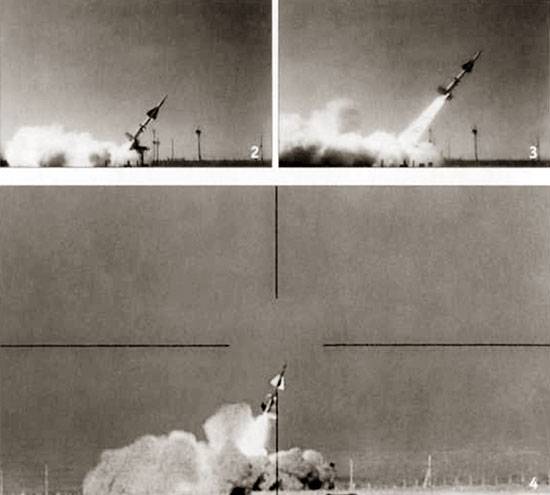
Shooting a test launch anti-missile B-1000. Photos from the site http://encyclopedia.mil.ru
At this speed, the rocket flew up to the target, the ballistic missile’s warhead. In close proximity to it, the combat unit of the B-1000, which weighed half a ton, should have exploded. It could carry a “special ammunition,” that is, a nuclear charge, which was supposed to guarantee the complete destruction of the enemy warhead without endangering the ground. But at the same time, the creators of the rocket developed and high-explosive fragmentation warhead, which had no analogues in the world. It was a charge of 16 000 balls of explosives, each with a diameter of 24 millimeter, inside which were hidden carbide-tungsten balls centimeter diameter. When a fuse was triggered, the whole filling, which the test participants called “cherry in chocolate”, flew away, forming a seventy-meter striking cloud along the course of B-1000. Taking into account the five-meter error in determining the coordinates of the target and aiming the antimissile of such a field of destruction, it was enough with a guarantee. The range of the missile was 60 kilometers, while it could destroy targets at altitudes up to 28 kilometers.
The development of the rocket began in the summer of 1955, its draft design was ready in December of 1956, and in October 1957 of the first prototype began on Sary-Shagan - 1BA, that is, autonomous casting. Rockets of this type made 8 launches, which took more than a year - until October 1958, after which the regular versions of B-1000 went into action. They began on October 16, 1958, by launching a B-1000 rocket in standard gear to an altitude of 15 kilometers.
"Annushka" is published
In the middle of autumn 1958, when all parts of the “A” system were more or less ready for general testing, it was time to test the missile defense system in action. By this time, the architecture and composition of the system was fully determined. It consisted of a radar for the long-range detection of ballistic missiles “Danube-2”, three radars for accurately targeting anti-ballistic missiles at a target (each included a target position determination station and an anti-missile coordinate detection station), an anti-missile anti-missile radar (RSVPR) and a station combined with it transfer of anti-missile control commands and the detonation of its warhead, the main command-computing station of the system, the central computing station with the M-40 computer and the radio-relay data transmission system between all means of the systems s. In addition, System A, or, as the developers and participants of the tests called Annushki, included the technical position of the anti-ballistic missile preparation and the launch position where the launchers were placed, and the B-1000 anti-missiles with on-board radio equipment and fragmentation warhead.
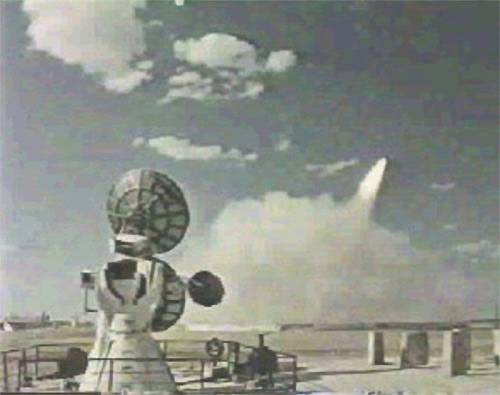
Test run B-1000. In the foreground - the radar output and sighting anti-missiles. Photos from http://militaryrussia.ru
The first launches of the B-1000 missiles in the so-called closed loop, that is, without approaching the target or for a conventional target, took place at the beginning of the 1960 year. Until May, only ten of such launches had to be completed, and 23 from May to November, working through the interaction of all the elements of the “A” system. Among these launches was the launch of 12 in May of 1960, the first launch to intercept a ballistic missile. Unfortunately, he was unsuccessful: the anti-missile missed. After that, almost all launches were carried out on real targets, with varying degrees of success. In total, from September 1960 to March 1961, 38 launches on the P-5 and P-12 ballistic missiles took place, during which 12 missiles went flying, equipped with a real high-explosive fragmentation warhead.
And then the streak of failures went, occasionally interrupted by more or less successful launches. So, November 5 1960 of the year В-1000, probably, would hit the target - if the target, the ballistic missile Р-5, flew to the test site, and did not fall halfway to it. A successful launch took place in 19 days, which, however, did not lead to hitting the target: the anti-missile missile passed from the 21 meter in four years (in four years in the USA, where the discrepancy is 2 km, such a result would be called a success!), But if the warhead worked, the result would have been as it should. But then - miss for miss and failure for refusal, for various reasons. As Witold Sloboda, Leading Designer of the Fakel ICB (formerly OKB-2) recalls, “the launches continued with varying success. One of them turned out to be unsuccessful: in flight, the end switch, from which the defendant began to work, did not turn on. They read the telemetry and found out that the respondent did turn on, but on the 40 second flight, when it was already too late. Peter Grushin flew to the landfill. Having gathered everyone to the technical position, I discussed the options for correcting the defect. Wise for a long time, and the "casket" opened quite simply. During start-ups, the weather was unstable: it was warm and cold. It turned out that before launching a crust of ice was formed on the end closure, which did not allow it to turn on. During the flight, the ice melted and the respondent turned on, but not at the right time. That's all. However, the contactor, just in case, nevertheless decided to duplicate ".
Day of triumph
2 March 1961, the seventy-ninth launch of B-1000 took place, which could be considered almost successful. The ballistic target missile was detected on time, the transmission of information and target designations went without problems, the anti-missile launched - but because of the operator’s error, it was not the warhead that was struck, but the body of the F-12 flying towards it. Nevertheless, this launch confirmed that all ground equipment works flawlessly, which means that there was one step to success.
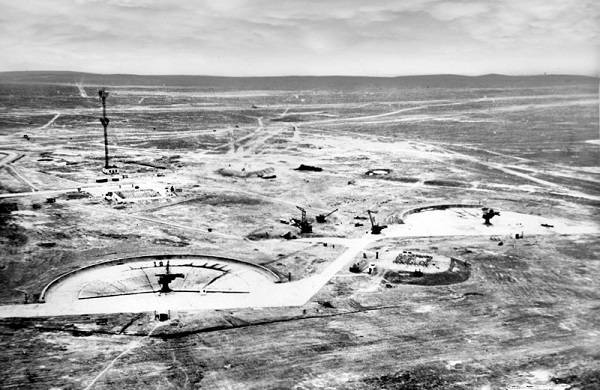
The launch area of the B-1000 interceptor missiles at the Sary-Shagan test site. Photos from http://militaryrussia.ru
This step took only two days. 4 March 1961 of the DANAY-2 long-range radar system “A” detected a target - a P-12 ballistic missile launched from the Kapustin Yar launch site - at a distance of 975 km from a prolonged point of its fall, when the rocket was above 450 km, and took aim at auto tracking. The M-40 computer, based on the data received from the Danube-2, calculated the parameters of the P-12 trajectory and provided target designation for precision guidance radars and launchers. The command “Start!” Arrived from the command-computing center, and B-1000 went flying along a trajectory, the parameters of which were determined by the predicted target trajectory. At a distance of 26,1 km from the conventional point of a ballistic missile warhead's fall, the Bombardment! Command arrived at B-1000, and after a few moments at an altitude of 25 km and a distance of about 60 km from the launch position of the anti-missile, it successfully hit the target. At the same time, the B-1000 flew, as it was supposed to, at speeds of 1000 m / s, and the P-12 warhead flew two and a half times faster.
This success marked the birth of the first national missile defense system. The most difficult work, which began literally from scratch and took eight years, was completed - so that a new one would begin immediately. “System“ A ”remained experimental, which, in other matters, was determined from the very beginning. In fact, it was a test of strength for the creators of the antimissile shield, the ability to propose and test solutions, on the basis of which a real, combat missile defense system will be built. And she appeared very soon. As early as 8 on April 1958, the USSR Council of Ministers adopted a resolution “Missile defense issues”, which assigned the Annushka developers the task, taking into account the results of the work already done, to undertake the development of the A-35 combat system capable of protecting a specific administrative-industrial area and intercepting targets for outside the atmosphere with the help of an anti-missile with a nuclear warhead. The Council of Ministers decisions by 10 December 1959 of the year “On the A-35 system” and from 7 January 1960 of the year - “On the creation of a missile defense system of the Moscow industrial region” appeared next.
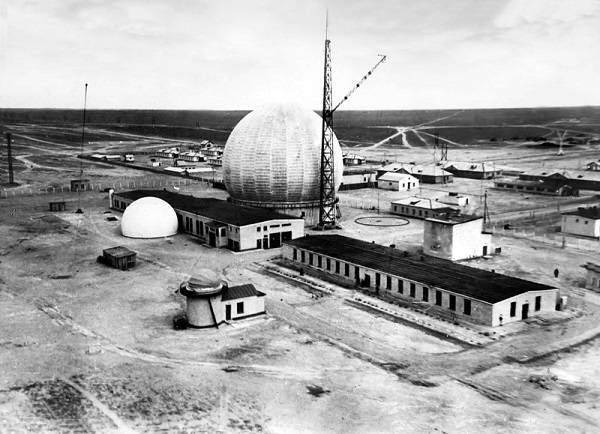
One of the precision missile radar at the Sary-Shagan test site. Photos from http://militaryrussia.ru
November 7 1964 of the year at the parade in Moscow for the first time showed the models of A-350Zh missiles, 10 of June 1971 of the year the missile defense system A-35 was put into service, and in June 1972 of the year was put into trial operation. A "System" A "and remained in the history of the national missile defense as a fundamental principle, a huge testing ground, which allowed the creation of all the following missile defense system of the Soviet Union and Russia. But it was she who laid their foundation, and it was she who made the American military hastily take up the development of its own missile defense system - which, as we remember, was essentially late.
Sources:
http://militaryrussia.ru/blog/topic-340.html
http://www.vko.ru/oruzhie/v-1000-pervaya-protivoraketa
http://priozersk.com/a_system/index.php
http://www.famhist.ru/famhist/sprn/0005e15b.htm
http://www.famhist.ru/famhist/sprn/000ff0f5.htm
http://www.moskva-kniga.ru/rakety-rossii.html
http://pvo.guns.ru/abm/systema_a.htm
http://pvo.guns.ru/abm/a35.htm
http://www.russianarms.ru/forum/index.php?topic=12928.0
https://defendingrussia.ru/enc/rakety_pro/sistema_protivoraketnoj_oborony_sistema_a_s_raketami_v1000-1627/
Information